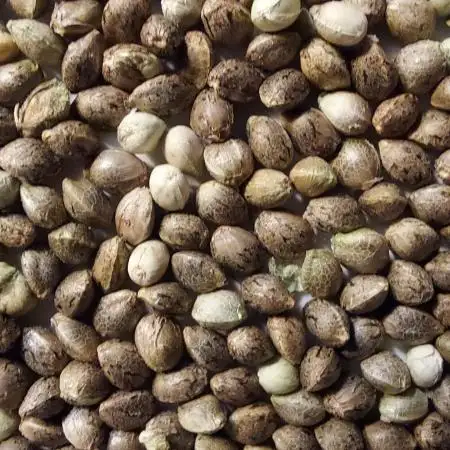The Grow Awards 2026 🏆
Watering en feeding EVERY DAY?
Studentlifestarted grow question 1y ago
Should i water coco every day? And should i feed with it??
What is your opinion on this topic!
Growing in 100% coco smart pot,
Solved
likes
Mo_Powersanswered grow question 1y ago
Yes, you should generally water coco coir every day, especially when your plants are well-established and in the flowering stage. Coco coir dries out faster than soil, and daily watering helps maintain consistent moisture levels, ensuring that your plants do not experience water stress.
Coco coir is an inert medium, meaning it doesn't contain any nutrients by itself. Therefore, it's crucial to feed your plants with nutrient solutions every time you water. This ensures that your plants get a steady supply of essential nutrients.
FuzzySnoutanswered grow question 1y ago
Coco coir is not a soil, it doesn't have any nutrients.
Yes, it should be watered every day, and yes, you should add nutrients with every watering.
Feeding schedule for coco is usually the same as hydro growing.
Get one recommended by nutrient brand you have and adjust to your plants.
Your air-pots look like they are at least 12.5 liter, in that case you need to water 1-2 liters per day each, depending on how much run off you'll get.
It looks like you can afford and have time to set up a drip irrigation system - do it.
You can buy one (MarsHydro), or do it yourself.
BTW, your air-pots assembled upside down (two rows without holes should be on the top) - just a hint for next time.
If you do everything right, in about a week you will see roots sticking in the bottom of the air-pots.
I never used fabric pots, but everybody is praising them.
1 like
Complain
Gnrlymsntrp81answered grow question 1y ago
Your plants look yellow.
Whats your watering schedule?
Since you are growing in coco, you should look into Cation Exchange Capacity (CEC).
In coco, you'll have to ad cal/mag right from the beginning (soaking your medium in advance). Also your veg fertilizer is needed from beginning.
You're pods dry out quickly I think, perhaps one number too big, as the smaller ones + drip irrigation would be a good thing.
Much success 😄
1 like
Complain
Scrubbyjimbobanswered grow question 1y ago
It really depends on if it's practical for you or not. I water mine with fertilizer every other day running 5 gal pots but also with a healthy amount of perlite. In smaller pots more frequent watering is more practical. At work we use small 100% coco bricks, expanded they're about 6" inches square. We water those in short cycles, 2-3 times a day via drip irrigation. You just don't want it soggy all the time, especially when they're young.
1 like
Complain
00110001001001111Oanswered grow question 1y ago
Not good enough drainage qualities to do it -- especially with smalelr plants in a bigger pot at the moment. All you'll do is hinder root growth. You'll need a larger plant than normal, relative to pot size, to warrant it because of the lack of perlite or similar. This isn't about "Can" it work but will it be worthile or will it elevate risks?
Allow a good wet-dry cycle to occur until you know your roots have fully colonized the whole pot. Allow top layer to start to change color at a minimum before repeating. Always fertilize, always have 10% runoff waste water -- never lt it sit in its piss. If you do that, any small problems you see are fixed with an adjustment to the fertilizer formula used. The rootzone will be consistent and you simply have to adjust it through the formula. Buildup is not possible in rootzone -- does not mean buildup cannot occur in the plant if feeding too much to start.
Later on, when it is drinking enough to warrant daily irrigations, you can ramp that up if you want. I'd still let the root mass develop first, but a minimum of 33% weight loss is a good trigger point for frequent irrigation setups.. how fast the plant drinks will determine if you can do more than 1 per day or not. This sort of thing requires the right sized plant and pot in order to function properly without causing elevated risks in your rootzone. From what i read you have diminishing returns after 2-3 fertigations per day... doing more is just extra work with no return. more and better reseach is needed for such a thing to be certain, of course. Some genetics may respond differently than others.
I water with less "dryback" between irrigations once i get to flower, but i also have a 5-6 week vege length for reference. Before that point i follow a steady wet-dry cycle so the roots develop more in order to best make use of those later more frequent irrigations in flower phase.
with coco you want 33% perlite or simialr amendment. This allows for optimal aeration, drainage and compaction avoidance (research based not anecdotal info nor personal preference). With a higher water capacity base, like sphagnum peat moss, you want 50% perlite or similar. This realtes to how much water/gas per volume results and why different water capacity substrates need different amounts of perlite or similar. coco holds about 2/3rds the volume of water compared to similar amount of sphagnum peat moss. You can see how this relates proportionally to the amount of perlite you "should" use.
a few percent off either way is irrelevant. low-precision of just filling up 1 bucket of perlite then 2 buckets of coco and mixing is fine. or 1 scoop, 2 scoops etc...
1 like
Complain






